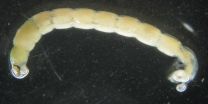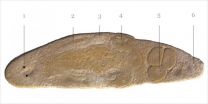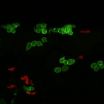(Press-News.org) St John's Wort can produce the same adverse reactions as antidepressants, and serious side effects can occur when the two are taken together, according to new University of Adelaide research.
In a study published this month in the journal, Clinical and Experimental Pharmacology and Physiology, researchers compared the pattern of spontaneous reported adverse drug reactions to St John's Wort, a herbal treatment for depression, and fluoxetine, a commonly prescribed antidepressant. They found the adverse reactions were the same for people who took St John's Wort as it was for those who took fluoxetine.
University of Adelaide pharmacology PhD student Claire Hoban says St John's Wort, like all herbal medicines, is a drug. Importantly, it is a drug that can cause serious side effects such as dangerous increases in body temperature and blood pressure.
"There is a common belief that because something is natural and can be purchased from a health food shop without a prescription, it's safe. However, people need to start thinking of St John's Wort, and other herbal medicines, as a drug and seek advice from a qualified healthcare practitioner to be sure they use it safely," says Mrs Hoban. "It's concerning to see such severe adverse reactions in our population, when people believe they are doing something proactive for their health with little risk.
"During 2000-2013, we found 84 reports of adverse reactions to St John's Wort and 447 to fluoxetine. While there were fewer confirmed cases of side effects for St John's Wort, we know that less people use St John's Wort and adverse reactions for herbal medicines largely go unreported because they are not considered drugs.
"Furthermore, we found that the reported reactions for St John's Wort were very similar to fluoxetine, which included anxiety, panic attacks, dizziness, vomiting, amnesia and aggression," she says.
Dr Ian Musgrave says the real danger is that people can access St John's Wort without a prescription so there is no control over the dosage or what drugs people are using it with.
"Most people taking St John's Wort will not have any adverse reactions; however, those who do take it should tell their doctor and pharmacist," says Dr Musgrave.
"It's important that doctors and pharmacists know about all the drugs their patients take, not just prescription drugs, because herbal medicines like St John's Wort can have serious reactions with some pharmacy medicines, like antidepressants, the contraceptive pill and some blood thinners.
"Based on this research, I'd also like to see bottles of St John's Wort containing improved warnings of the potential adverse reactions," he says.
INFORMATION:
A research in the North Caucasus, conducted by a group of Russian scientists over three years, has revealed an intermediate distribution of Caucasian populations of non-biting midges between Europe and Siberia. Their observations also proved some interesting morphological distinctions between the studied populations and the previously researched ones from Europe and Siberia. Their results have been published in the open-access journal Comparative Cytogenetics.
The study on karyotypical and morphological peculiarities of Ch. bernensis is a part of the investigation of ...
Sandcastles are a prime example of how adding a small amount of liquid to a granular material changes its characteristics. But understanding the effect of a liquid wetting randomly oriented fibres in a fibrous medium remains a mystery. Relevant to the building industry, which uses glass wool, for instance, this phenomenon can be better understood by studying the behaviour of a liquid trapped between two parallel fibres. It can either remain in the shape of a drop or spread between the fibres into a long and thin column of liquid. Now, scientists have demonstrated that the ...
Failing to find a mating partner is a dent to the reproductive prospects of any animal, but in the flatworm species Macrostomum hystrix it might involve a real headache. Zoologists from the Universities of Basel and Bielefeld have discovered the extraordinary lengths to which this animal is willing to go in order to reproduce - including apparently injecting sperm directly into their own heads. The academic journal Proceedings of the Royal Society B has published their findings.
The absence of a mate usually spells disaster for sexually reproducing animals. However, some ...
Atoms absorb and emit light of various wavelengths. Physicists have long known that there are some tiny changes, or shifts, in the light that gets absorbed or emitted, due to the properties of the atomic nucleus. Now, a team of scientists has elucidated the so-called hyperfine structure of cadmium atoms. Relying on a method called laser spectroscopy, they have measured variations in the energy transition within cadmium atom - Cd in the periodic table. They studied a chain of isotopes with an odd number of neutrons ranging from 59 in 107Cd to 75 in 123Cd. From these high-precision ...
A good night's sleep has long been recommended to those who have experienced a traumatic event. But an Oxford University-led study provides preliminary experimental work suggesting it could actually be the wrong thing to do.
The research, conducted in Oxford's Wellcome Trust-funded Sleep and Circadian Neuroscience Institute (SCNi) and published in the journal Sleep, showed that sleep deprivation might prevent people from consolidating memories of experimental trauma (emotional film clips in the study), reducing their tendency to experience flashbacks.
Dr Kate Porcheret, ...
(SACRAMENTO, Calif.) -- Soldiers injured during the conflicts in Iraq and Afghanistan have the highest survival rates in history, thanks to the availability of surgeons skilled in combat care. But combat-ready surgical skills are hard to sustain off the battlefield.
"A lot of knowledge builds up in the military medical enterprise during times of war," said Joseph Galante, who chairs the UC Davis Division of Trauma, Emergency and Critical Care Surgery and is a commander in the U.S. Navy Reserves. "When peacetime comes, that knowledge can slide. We need to identify ways ...
The global supply of seafood is set to change substantially and many people will not be able to enjoy the same quantity and dishes in the future due to climate change and ocean acidification, according to UBC scientists.
These findings were released today in Japan by the Nereus program, an international research team led by UBC scientists and supported by the Nippon Foundation. The Nereus program was formed to study the future of the world's oceans and seafood resources. Today it released a summary of the first phase of its research in a report titled 'Predicting Future ...
ASCO Perspective: Gary Schwartz, MD, ASCO Expert "This study adds to the growing discussion around food and cancer risk. While the findings are intriguing, it's far too soon to recommend any broad changes to grapefruit or orange consumption. Until conclusive data are available, we should continue to be cautious about protecting our skin from sun exposure."
A new analysis of dietary patterns among more than 100,000 Americans suggests that frequent consumption of citrus -- namely whole grapefruit and orange juice -- may be associated with an increased risk of melanoma. ...
July 1 -- Researchers in the United Kingdom and Denmark have studied the "see-through" larvae of zebrafish to reveal how wound healing leads to skin cancer. Live imaging shows neutrophils, the protective inflammatory cells of the body's immune system, diverted from an induced wound to any nearby precancerous skin cells. The newly arrived neutrophils cause rapid division of these skin cells, which may cause them to progress to melanoma. The results are published in The EMBO Journal.
"Our results provide direct visual evidence of a physical link between wound-associated ...
Scientists from the University of Leeds and The Institute of Cancer Research, London, have discovered a new protein which triggers the growth of blood vessels in breast cancer tumours which have spread to the brain, a common location which breast cancer can spread to.
Dr Georgia Mavria's team in the School of Medicine at Leeds found that by withholding the DOCK4 protein in mouse models, a particular part of the blood vessel did not form as quickly, meaning tumours grew at a slower rate.
Dr Mavria said: "We want to understand how these tumours form and grow, but we still ...



